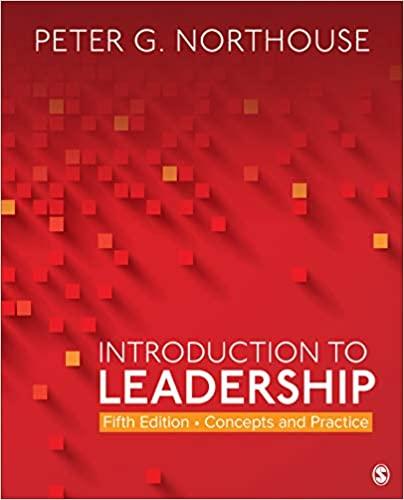Question
1. Suppose a bank has a 5 percent reserve ratio, $10,000 in deposits, and it loans out all it can, given the reserve ratio. Which
1. Suppose a bank has a 5 percent reserve ratio, $10,000 in deposits, and it loans out all it can,
given the reserve ratio. Which of the following is correct _____?
A. It has $50 in reserves and $9950 in loans.
B. It has $500 in reserves and $9500 in loans.
C. It has $555 in reserves and $9445 in loans.
D. It has $559 in reserves and $9445 in loans.
2. The ability of banks to create money has its source in which of the following _____?
A. the 100 percent reserve requirement
B. fractional-reserve banking (i.e. less than 100 percent reserve requirement)
C. the ability of the government to mint as much currency as it wishes
D. the banks' ability to issue currency (bank notes) of their own
3. Which of the following items is a liability to a bank _____?
A. loans
B. reserves
C. deposits
D. an interest-bearing asset owned by the bank
4. Other things being equal, when the Federal Reserve Bank cuts its discount rate, which of the following is likely to occur _____?
A. The money supply tends to fall.
B. Bank reserves tend to fall.
C. Bank lending tends to fall.
D. The money supply tends to rise
5. When the Federal Reserve conducts open market sales, what effect does it have on the money
Supply _____?
A. It increases the money supply.
B. It decreases the money supply.
C. There is a gradual change to the money supply.
D. There is no change to the money supply.
6. First National Bank has assets of $500,000 and liabilities of $400,000. First National Bank's equality (net capital) is ____.
A. $900,000.
B. $400,000.
C. $100,000.
D. $500,000.
7. Refer to the table below. The required reserve ratio is 25%. If the First Charter Bank is meeting its reserve requirement and has no excess reserves, its loans equal ____.
A. $900.
B. $1,000.
C. $600.
D. $1,800.
8. The Bank of Green Oak has $2 million in deposits and $400,000 in reserves. If excess reserves are equal to $100,000, the required reserve ratio is ____.
A. 15%.
B. 10%.
C. 20%.
D. 5%.
9. Suppose the required reserve ratio is 15%. A $30 million deposit will, at most, allow an expansion of the money supply to ____.
A. $167 million.
B. $200 million.
C. $150 million.
D. $250 million.
10. Considering a recession may happen next year. Commercial banks are more conservative in their lending policies and start holding some excess reserves. Compared to a situation in which banks are not holding excess reserves, the size of the money supply will be ____.
A. depending on fiscal policy
B. larger.
C. the same.
D. smaller.
Step by Step Solution
There are 3 Steps involved in it
Step: 1

Get Instant Access with AI-Powered Solutions
See step-by-step solutions with expert insights and AI powered tools for academic success
Step: 2

Step: 3

Ace Your Homework with AI
Get the answers you need in no time with our AI-driven, step-by-step assistance
Get Started


